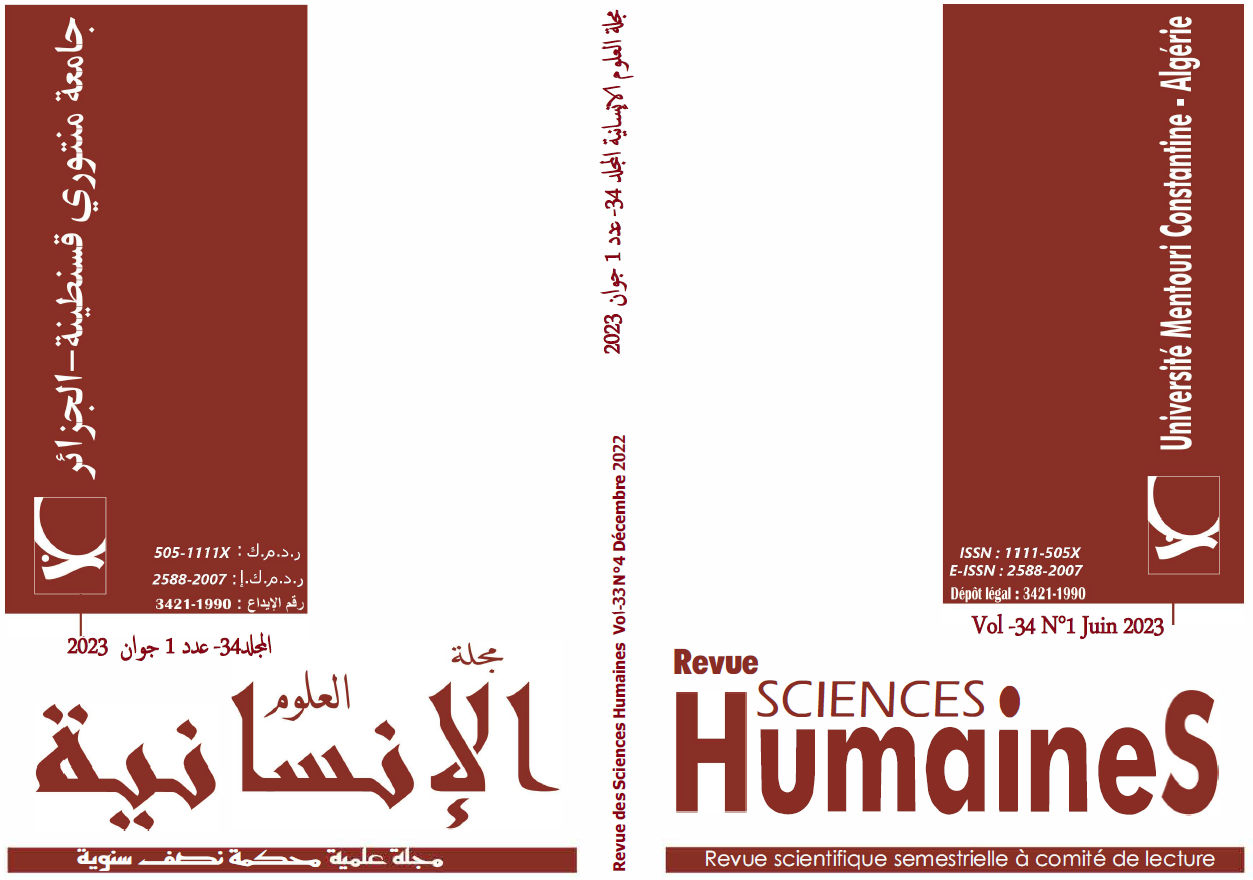Explorations in George Eliot’s Perception of Islam: Arabs, Moors, Muslims, and Islam in The Spanish Gypsy
Keywords:
G. Eliot, Victorian, Islam, Spanish Gypsy, MoorAbstract
This article proposes to explore George Eliot’s perception of Islam and Muslims in The Spanish Gypsy (1868). It argues that Eliot showed prejudiced views against this religion and its followers at the time she was writing this poem. This will be demonstrated through her use of typically stereotyped racial characterization and persistent ostentatious religious iconography amid a narrative context exacerbated by violence and cruelty as shown in the story of the poem set in the fifteenth-century al-Andalus’ (Moorish Spain) holy war. In order to clearly determine Eliot’s attitude to Muslims as the alien others, the article will equally explore and compare her view with other ethnic and religious communities involved in the historical course of events described in the poem, notably Gypsies, Jews and Christians.
Downloads
References
. Ahmad ibn Mohammed al-Makkari was born in Tlemcen in 1577 (referred to as Telemsan in both Gayango’s translation and George Eliot’s The Spanish Gypsy) and died in Cairo in 1632. His History of al-Andalus or Moorish Spain was originally entitled Nafh al-tib min ghusn al-Andalus al-Ratib. Its Arabic version was printed in eight volumes in Beirut, Lebanon in 1968.
. When Eliot was questioned about her use of the term “Andalus” for “Andalusia” she replied that she “had a sufficient authority for that in the Mohammedan Dynasties, translated by Gayangos.” (Life & Letters 526)
. Eliot apparently makes anachronistic reference to the Turk in the poem when she writes: “The sacred places shall be purged again, / The Turk converted” (TSG 7).
. In “Notes on The Spanish Gypsy” Eliot explains both her interest in and sympathy for people born with “the commonest inherited misfortunes” (Life & Letters 510), such as Gypsies: “Love, pity, constituting sympathy, and generous joy with regard to the lot of our fellow men, comes … enormously enhanced … by an imagination actively interested in the lot of mankind generally” (Life & Letters 511).
. Blood, in The Spanish Gypsy, is used as a symbol of both violence and race. As a universal symbol of racial ties within a community, Eliot indistinctly uses it for Christians, Jews, Gypsies and Muslims alike.
. Nancy Henry does not miss the point when she writes: “There is irony in romanticizing and ennobling the conflict of races in Moorish Spain and the heroism of the warrior Gypsies after denying Thornie’s wish to fight for the Poles and minimizing his engagement with the Basutos” in Africa where he settled with his brother as colonists (176).
. As Eliot herself admits when she wrote to her friend Bodichon about her visit to Spain in 1867: “Perhaps if I had been in Africa, I should say as you do that the country reminded me of Africa: as it is, I think of all I have read about the East” (Life & Letters 490).
Works Cited
Al-Makkari. The History of the Mohammedan Dynasties in Spain. Vol. 2. Trans. Pascual De Gayangos. London: W. Hughes, 1843.
Borrow, George. The Zincali; or An Account of the Gypsies of Spain. Philadelphia: J. M. Campbell & Co., 1843.
Carroll, Alicia. “ ‘Arabian Nights’: ‘Make-Believe,’ Exoticism, and Desire in Daniel Deronda.” JEGP, Journal of English and Germanic Philosophy April 1999 98:219-38.
Charnon-Deutsch, Lou. The Spanish Gypsy: The History of a European Obsession. Penn State Press, 2004.
Cross, J. W., ed. The Works of George Eliot: Life and Letters. N.Y: The University Society Publishers, 1884.
Eliot, George. “Evenings in My Tent.” Rev. of Evenings in My Tent; or, Wanderings in Balad Ejjareed, Illustrating the Moral, Religious, Social and Political Conditions of Various Arab Tribes of the African Sahara, by N. Davis. The Leader 8 April 1854: 330-31.
---. The Spanish Gypsy. Boston: Ticknor & Fields, 1868.
Flesler, Daniela. The Return of the Moor: Spanish Responses to Contemporary Moroccan Immigration. Purdue U P, 2008.
Henry, Nancy. The Life of George Eliot: A Critical Biography. West Sussex: J. Willey & Sons, 2012.
Knox, Robert. The Races of Men: A Fragment. Philadelphia: Lea & Blanchard, 1850.
Kurnick, David. “Unspeakable George Eliot.” Victorian Literature and Culture 38.2 (2010): 489-509.
Downloads
Published
Issue
Section
License
Copyright (c) 2023 Human Sciences Journal

This work is licensed under a Creative Commons Attribution-NonCommercial-NoDerivatives 4.0 International License.












